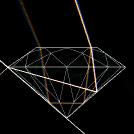

Modal dispersion occurs only in Multimode fibers. (III) Waveguide dispersion MODAL DISPERSION There are three main types of dispersion in a fiber – The bit-rates must be low enough to ensure that pulses are farther apart and therefore the greater dispersion can be tolerated.ĪLSO READ Working principle of Bell Coleman air refrigeration system | Bell refrigeration Dispersion limits the bandwidth or information carrying capacity of a fiber. NA = 0.275 (For 62.5 mm Core Fiber) DISPERSION : Types of dispersion in a fiberĭispersion is the spreading of light pulse as its travels down the length of an optical fiber. * Light Ray B : Entered Acceptance Cone – Transmitted through the Core by Total Internal Reflection. * Light Ray A : Did not Enter Acceptance Cone – Lost NA in a multimode fiber is important to system performance and to calculate anticipated performance. A large NA promotes more modal dispersion since more paths for the rays are provided NA, although it can be defined for single-mode fiber, is essentially meaningless as a practical,Ĭharacteristic. They thus allow fewer modes means less dispersion and hence greater bandwidth. In general, fibers with a high bandwidth have a lower NA. A fiber with a large NA accepts light well, a fiber with a low NA requires highly directional light. The NA of fiber is important because it gives an indication of how the fiber accepts and propagates light. These angles form a cone called the acceptance cone, which gives the maximum angle of light acceptance.

We can also define the angles at which rays will be propagated by the fiber. Where n 1 and n 2 are refractive indices of core and cladding respectively. The material NA relates to the refractive indices of the core and cladding. Light injected into the fiber at angles greater than the critical angle will be propagated.

Numerical aperture (NA) is the “light – gathering ability” of a fiber. In general, when we say that a system has bandwidth of 20 MHz, means that 20 million pulses of light per second will travel down the fiber and each will be distinguishable by the receiver. System bandwidth is measured in MHz or GHz. It is defined as the amount of information that a system can carry such that each pulse of light is distinguishable by the receiver. ecause of the spreading effect, pulses tend to overlap, making them unreadable by the receiver. It is defined as the spreading of light pulse as it travels down the fiber. A dB represents the comparison between the transmitted and received power in a system. These bends may not be visible with the naked eye.Īttenuation is measured in decibels (dB). (II) Microbending – Microbending or small bends in the fiber caused by crushing contraction etc. Macrobending – The fiber is sharply bent so that the light traveling down the fiber cannot make the turn & is lost in the cladding.


 0 kommentar(er)
0 kommentar(er)
